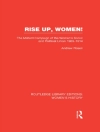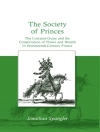The twentieth century was filled with many tragedies. During the Second World War, Babyn Yar – a ravine outside Kyiv where victims were shot dead and dumped into pits – became a prominent symbol of the destruction of the European Jews during the Holocaust. This deadly process began in September 1941 with the murder of nearly 34, 000 Jews and continued over the next several years with the shootings of tens of thousands more Jews as well as the Roma people, the mentally ill, Soviet prisoners of war, Ukrainian national activists, Communist party members, and ordinary residents of Kyiv taken as hostages. Bringing together leading scholars, Babyn Yar presents a comprehensive analysis of one of the most traumatic sites in the Ukrainian experience of the war. The book provides an overview of the geographical space of the ravine and the historical conditions in Europe and Ukraine leading up to the war. It details the mechanism by which Nazi Germany carried out the 1941 massacre and the on-going killing of Jews and non-Jews at Babyn Yar during the remaining years of the war. Drawing on depictions in personal memoirs, oral history, literary works, art, cinema, and music, the book analyses in great detail the ways in which Babyn Yar has been remembered by survivors. In doing so, Babyn Yar sheds light on one of the twentieth century’s most terrible human tragedies and the importance of preserving its memory.
Про автора
Vladyslav Hrynevych is a senior researcher at the Institute of Political and Ethno-National Studies of the National Academy of Sciences of Ukraine.












